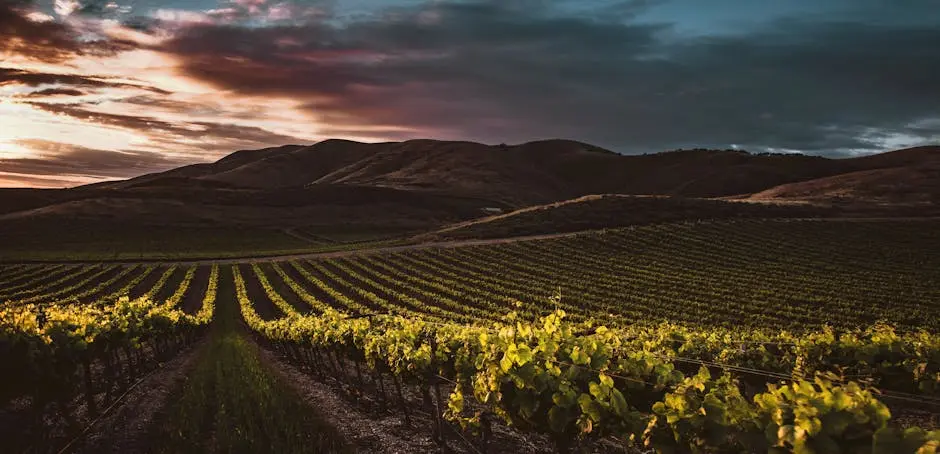Cabernet Sauvignon, one of the most popular red wine varieties globally, comes with its unique charm when produced in the Sierra Foothills. This region offers a distinct terroir that shapes the wine’s flavor and character. Let’s dive into the fascinating process of how this beloved wine is crafted amidst the scenic foothills.
Selecting the Ideal Vineyard Location
The Sierra Foothills offer a unique blend of climate and soil composition that is ideal for growing Cabernet Sauvignon grapes. Selecting the perfect spot is crucial to the wine’s quality. The region’s rocky, volcanic soils possess excellent drainage, which is essential for the vines to thrive and produce rich, concentrated grapes Cabernet Sauvignon wines from the Sierra Foothills. Additionally, the elevation and microclimates allow for cooler nights, which help preserve the grape’s acidity and balance.
Choosing the right vineyard location involves understanding the nuances of the terrain. The proximity of the Sierra Foothills to the cooling influence of the Sierras and the warm valley floor creates an optimal environment for vine growth. The diverse topography offers a range of vineyard sites, each with its distinctive attributes. This variability is a critical advantage, offering winemakers the ability to select areas that best suit the Cabernet Sauvignon varietal’s needs. It also means that vines can mature at different times, allowing for a staggered and precise harvest.
Grape Harvesting Techniques
The timing of the harvest plays a vital role. Grapes are carefully picked at their peak ripeness to ensure optimal flavors. Because of the unique terroir of the Sierra Foothills, the harvest is an intricate process that requires expertise and attentiveness. Winemakers in the area often rely on traditional handpicking methods to maintain the integrity of the grape clusters, preventing them from being damaged during collection.
Experienced vineyard managers assess the sugars, acidity, and tannin levels before deciding the perfect moment to pick. This attention to detail ensures that the grapes are harvested with the ideal balance of sugars and acids, leading to a well-rounded wine. The cooler nighttime temperatures offer a slower ripening process, which gives winemakers a more significant window to pick grapes at their prime.
Fermentation Process
Once the grapes are harvested, they undergo fermentation. This involves converting sugars into alcohol, which shapes the wine’s body and taste. The Sierra Foothills winemakers often use a combination of traditional and modern fermentation techniques to enhance the wine’s unique characteristics. By controlling the fermentation temperature, winemakers can influence the wine’s aroma and flavor profile.
Fermentation is a careful balance of art and science. The duration and temperature of fermentation are adjusted to bring out the best in the Cabernet Sauvignon grapes. This process is vital in defining the wine’s body, mouthfeel, and tannic structure. The Sierra Foothills’ environment allows winemakers to experiment with various yeasts and fermentation vessels, adding an extra layer of complexity to the final product.
The Art of Aging
To develop its rich flavors and tannins, the wine is aged in oak barrels, influencing the complexity and depth of the final product. Aging in oak is a defining step in the production of Cabernet Sauvignon in the Sierra Foothills, providing the wines with a characteristic smoothness and depth. The type of oak, whether American or French, also affects the wine’s final profile, offering notes ranging from vanilla to spice.
The duration of aging varies based on the desired wine style. Some producers opt for a prolonged aging period to create a more complex and robust wine, while others prefer shorter durations for a fresher and fruit-forward profile. The mastery of aging results in wines that are both expressive and balanced, showcasing the distinctiveness of the Sierra Foothills terroir.
Bottling and Quality Control
Before reaching consumers, the wine is carefully bottled and undergoes rigorous quality checks to ensure it meets high standards. Winemakers in the Sierra Foothills maintain a meticulous approach to ensure each bottle reflects the vineyard’s distinctive characteristics and the winemakers’ vision.
Quality control measures are implemented at every stage, from vineyard to bottle, to ensure consistency and excellence. This process includes sensory evaluations and laboratory analyses to monitor the wine’s stability and quality. Only after passing these stringent checks do the wines get an opportunity to be savored by enthusiasts around the world.
An Artful Craft: Cabernet Sauvignon from the Sierra Foothills
Producing Cabernet Sauvignon in the Sierra Foothills is a meticulous yet rewarding process. From the choice of soil and climate considerations to the fermentation and aging processes, every step contributes to the wine’s unique profile. This regional specialty truly embodies the character and beauty of its environment.



